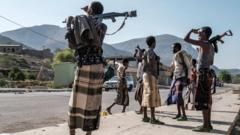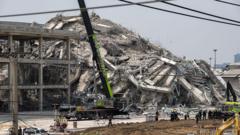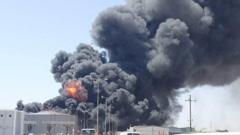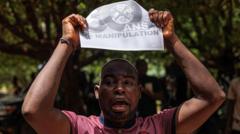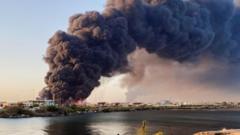As rescue operations progress in Myanmar after a devastating earthquake, new survivors are found amid growing death tolls, international support, and complex political dynamics with the ruling junta's ongoing military actions.
Rescue Efforts Intensify as Myanmar Earthquake Aftermath Unfolds
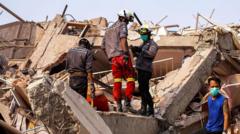
Rescue Efforts Intensify as Myanmar Earthquake Aftermath Unfolds
Following a catastrophic 7.7 magnitude earthquake, search and rescue teams continue their efforts to save survivors in Myanmar amidst rising casualties and international response.
The southeastern Asian nation of Myanmar is grappling with the aftermath of a devastating 7.7 magnitude earthquake that struck near Mandalay on Friday, killing at least 1,700 people. Rescue teams have successfully pulled four additional survivors from the rubble of a collapsed school building in the Sagaing region, bringing hope amidst the tragedy. Tragically, the death toll continues to escalate, with at least 18 fatalities reported in neighboring Thailand after a high-rise building under construction collapsed due to separate tremors.
In Myanmar, search and rescue operations are ongoing, as hundreds remain unaccounted for. Over the weekend, an elderly woman trapped for 36 hours under the debris of a hospital was successfully rescued, her dramatic extraction captured on film as she was transported to safety. Reports indicate that 29 individuals were rescued from a separate collapsed apartment building in Mandalay, emphasizing the scale of the disaster.
The earthquake, which occurred just 10km (6.2 miles) beneath the surface, elicited strong ground-level tremors and was followed by a magnitude-6.4 aftershock. Subsequent tremors, including a magnitude-5.1 quake recorded on Sunday, have further complicated rescue efforts. Experts have noted that the particular geological characteristics of the Sagaing fault enabled seismic waves to impact areas beyond Myanmar's borders, with effects reported in distant regions like China and Thailand.
As the crisis unfolds, international aid is beginning to filter into Myanmar. Rescue teams from various nations, including China, India, Malaysia, and the UK, have committed resources to the relief effort, with the UK pledging £10 million for humanitarian assistance. However, significant delays in reaching the worst-affected areas have raised concerns, with locals often resorting to manual efforts to locate survivors amidst the ruins.
Compounding the humanitarian crisis, the country's ruling military junta has been conducting airstrikes in areas torn by civil conflict, prompting condemnation from the UN and calls for a pause in military operations. The National Unity Government, representing the ousted civilian administration, announced a two-week suspension of offensive military activities in earthquake-affected regions.
As Myanmar braces for the arrival of the monsoon season, the potential for further displacement and humanitarian challenges looms. Previous flooding cycles have caused considerable damage to infrastructure and sanitation, with aid workers highlighting the urgent need for sustained assistance during this critical time.



